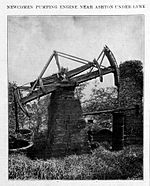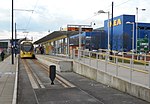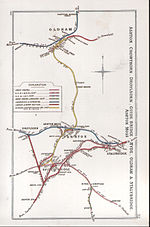Ashton Waterloo (ward)
Wards of Tameside

Ashton Waterloo is an electoral ward of Tameside, England. It is represented in Westminster by Angela Rayner Labour MP for Ashton-under-Lyne.
Excerpt from the Wikipedia article Ashton Waterloo (ward) (License: CC BY-SA 3.0, Authors, Images).Ashton Waterloo (ward)
Camberwell Drive, Tameside Limehurst
Geographical coordinates (GPS) Address Nearby Places Show on map
Geographical coordinates (GPS)
| Latitude | Longitude |
|---|---|
| N 53.5046 ° | E -2.1021 ° |
Address
Camberwell Drive
Camberwell Drive
OL7 9SN Tameside, Limehurst
England, United Kingdom
Open on Google Maps





